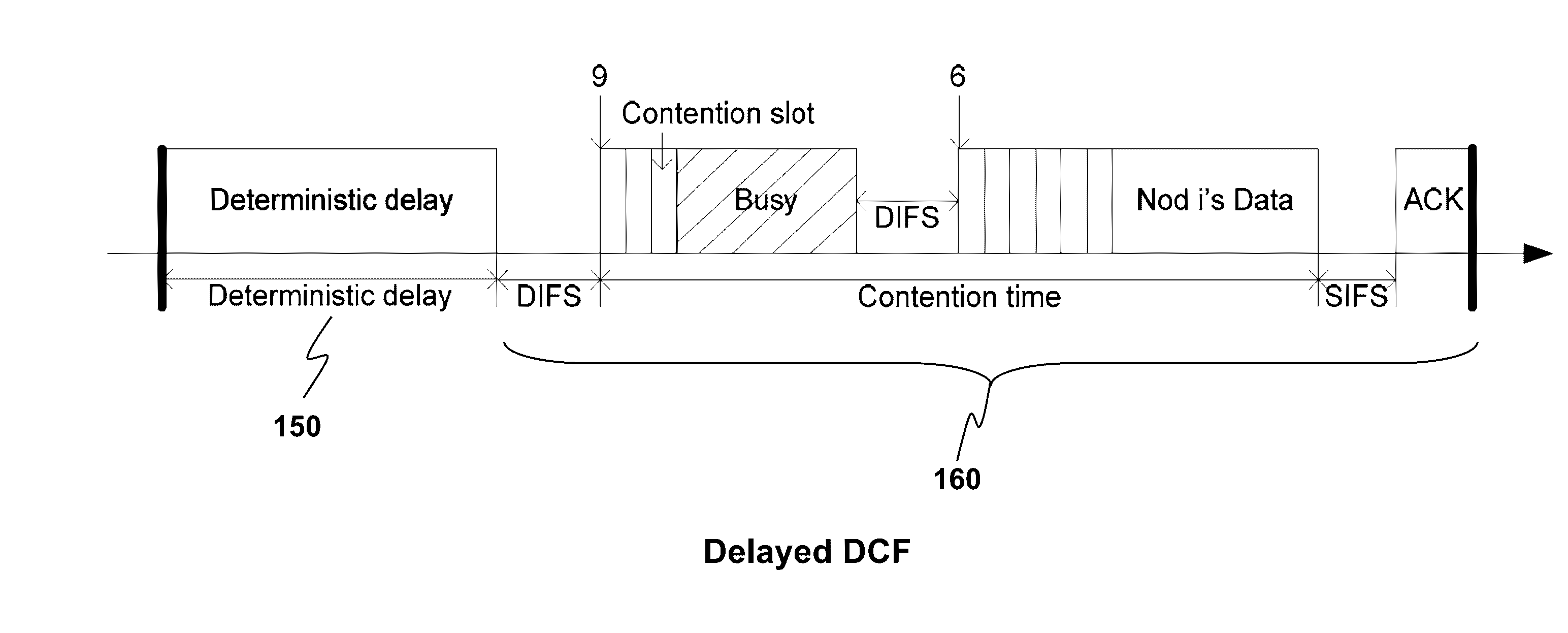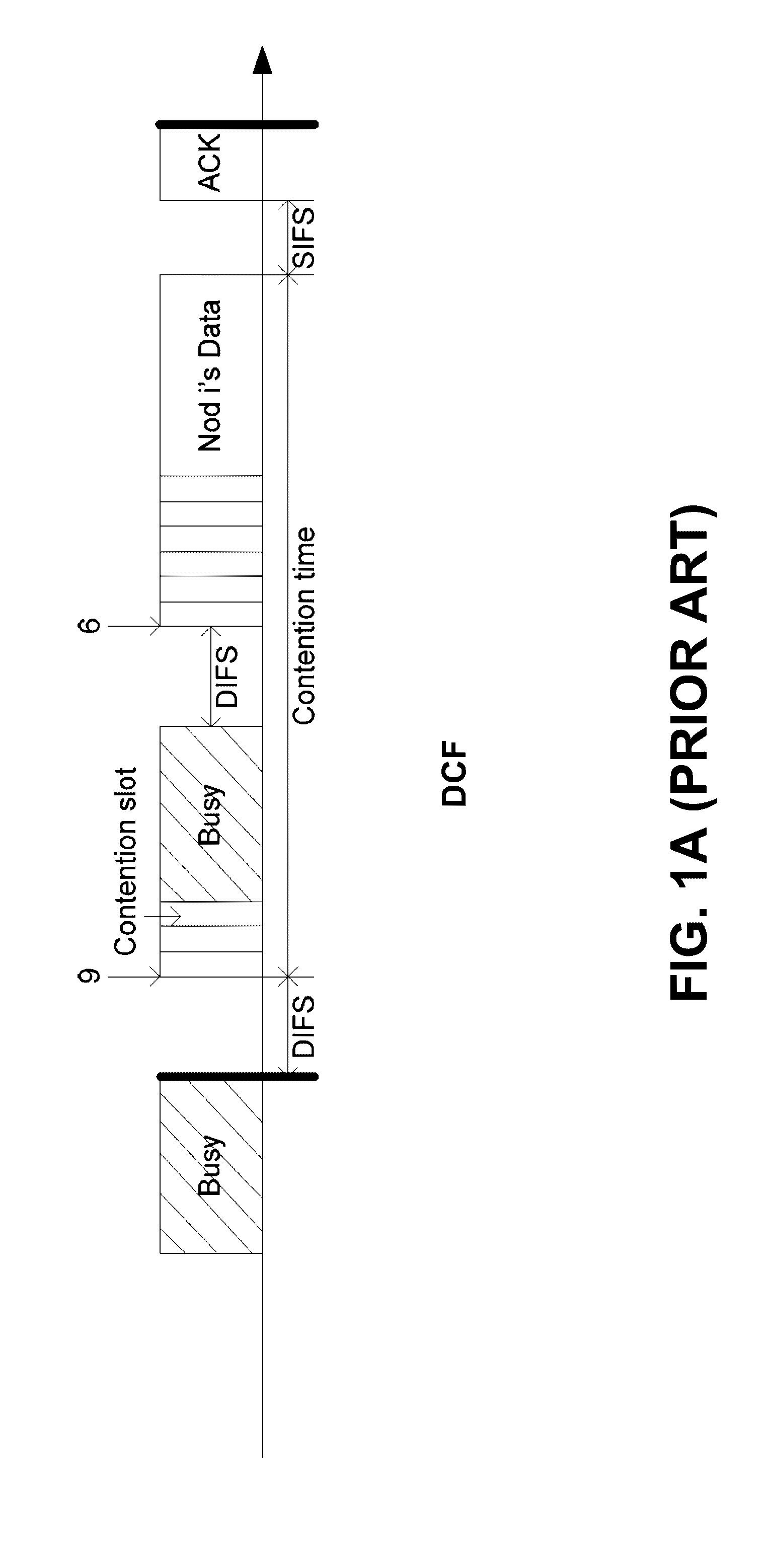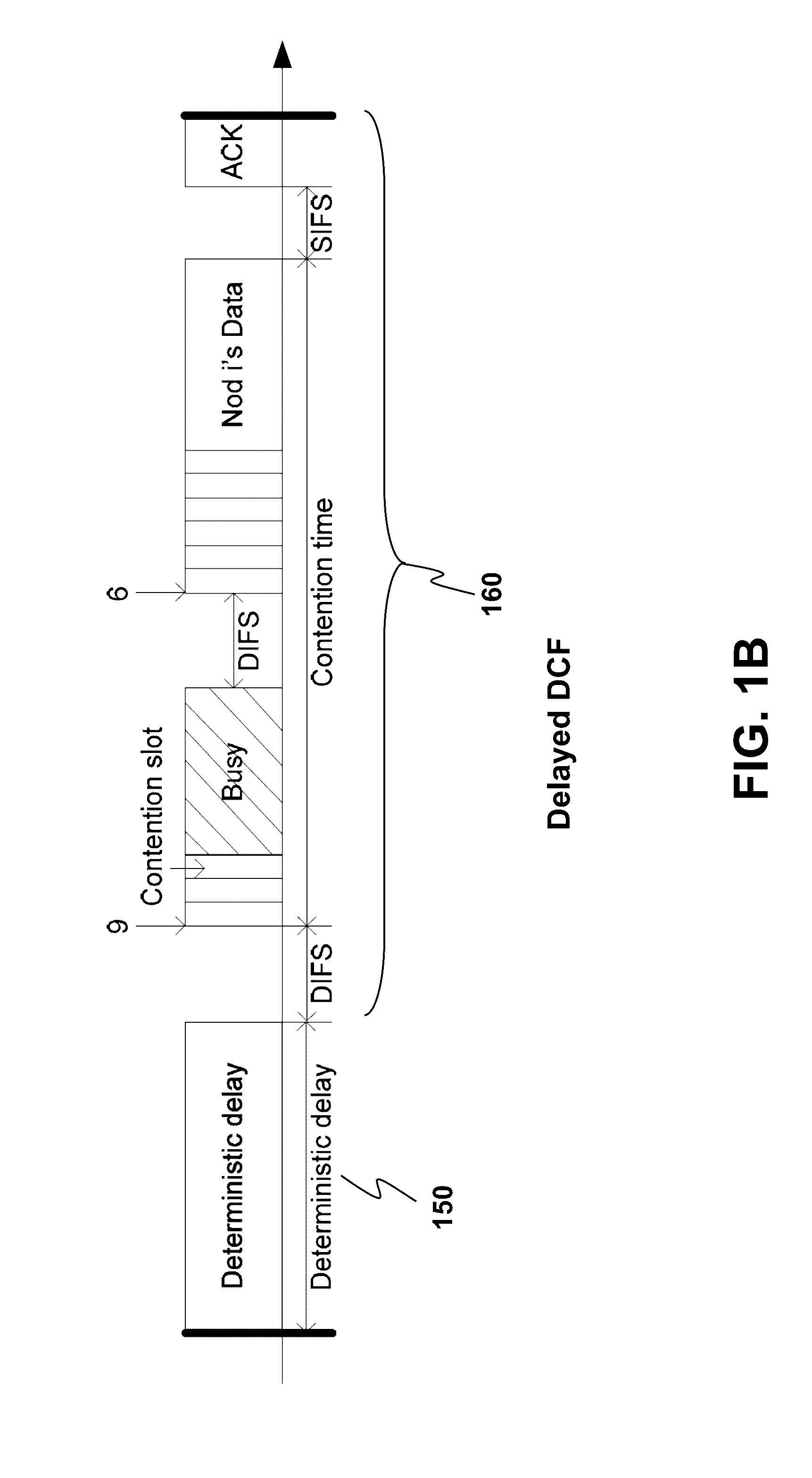System Parameter Optimization for Delayed Channel Access Protocol
a delay channel and parameter optimization technology, applied in the field of system parameter optimization of delay channel access protocol, can solve the problem of badly reducing channel utilization, and achieve the effect of reducing channel utilization
- Summary
- Abstract
- Description
- Claims
- Application Information
AI Technical Summary
Benefits of technology
Problems solved by technology
Method used
Image
Examples
Embodiment Construction
[0045]In a previously-proposed DCA protocol, the delay that a node enters into a normal DCF procedure is random. It makes theoretical analysis difficult so that an optimized system parameter that maximizes the system performance is not derivable. Based on this observation, we propose a special case of DCA where the random delay is replaced by a deterministic constant. We call a protocol that utilizes this special case as a delayed-DCF protocol.
[0046]In the delayed-DCF protocol, a node must wait for an extra deterministic delay before it enters into the normal DCF procedure and transmits at most one packet upon each transmission opportunity. If the deterministic delay is set to zero, the delayed-DCF becomes the legacy DCF. Note that there is a distinct difference between the deterministic delay and the backoff time in the legacy DCF procedure. The former is independent of the channel status, whereas in the latter, its timer may be suspended and resumed, depending on the channel statu...
PUM
 Login to View More
Login to View More Abstract
Description
Claims
Application Information
 Login to View More
Login to View More - R&D
- Intellectual Property
- Life Sciences
- Materials
- Tech Scout
- Unparalleled Data Quality
- Higher Quality Content
- 60% Fewer Hallucinations
Browse by: Latest US Patents, China's latest patents, Technical Efficacy Thesaurus, Application Domain, Technology Topic, Popular Technical Reports.
© 2025 PatSnap. All rights reserved.Legal|Privacy policy|Modern Slavery Act Transparency Statement|Sitemap|About US| Contact US: help@patsnap.com



